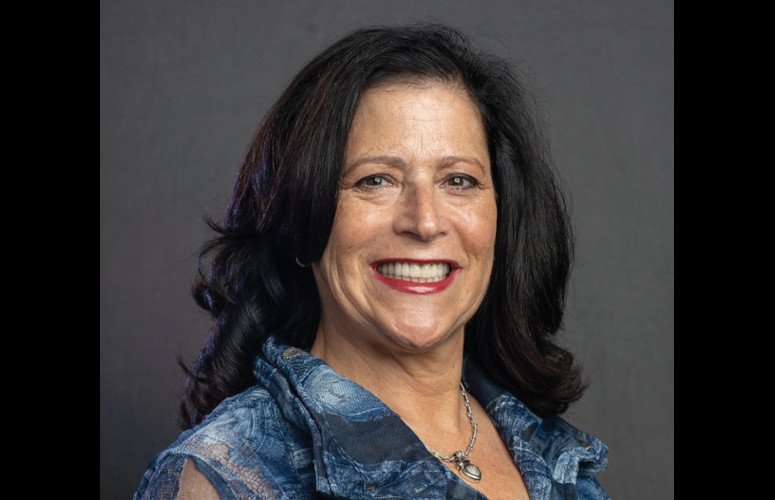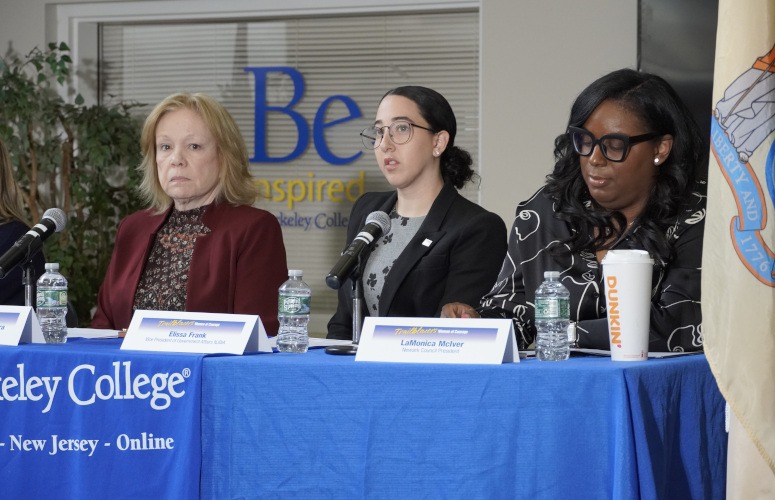
A Woman’s Strong Suit? Consensus Building
A growing number of New Jersey trade and business associations, plus state agencies, are being led by women. Discover who some of these executives are and how they are successfully leading their organizations.
By Anthony Birritteri, Editor-in-Chief On Mar 14, 2016There is a trade association for practically every industry under the sun, and here in the Garden State, the sun shines brightly on the growing number of business organizations headed by women executives. The list on page 52 underscores this fact. In celebration of Women’s History Month, New Jersey Business magazine explains this growing trend by interviewing female leaders not only at these trade and business associations, but state agencies as well.
Michele Siekerka, who in 2014 became the first female president to head the 106-year-old New Jersey Business & Industry Association in Trenton, hopes the trend is being driven by the recognition that women are “very good leaders. They have the skill sets and attributes that are being recognized as appropriate for leadership at these organizations.”
“Are these [skills and attributes] different or better than men? … In some regards, the traits are the same. They are the ability to manage, build consensus and make decisions,” Siekerka says. However, she adds that women tend to be more consensus builders than men. “Women will try first to yield consensus knowing that the more you engage people, the more they are apt to own the results of the decision. However, if consensus can’t be met, women [leaders] are not afraid to make the decisions,” she says.
Siekerka heads an association that boasts 20,000 member companies, which represent 1.2 million jobs in the state. In fact, NJBIA is the largest employer organization in the country. Its members range in size from small businesses with 25 or fewer employees (80 percent of NJBIA’s membership), to mid-sized businesses and the Fortune 500.
“Our mission is to provide support for our members, and that takes on many different aspects,” Siekerka says. “We advocate for a strong business climate so that members can be successful. That means trying to keep the cost of business down in the state, trying to create new jobs, ensuring economic vitality and connecting businesses with consumers.”
On the resource side, the NJBIA president and CEO says the association tries to deliver the types of programs and services businesses need, such as support on compliance issues, whether it is human resources or environmental concerns, for example.
“We need to look at the different segments of our membership and provide the right service at the right time, at the right venue, at the right price … that is not going to be the same for all 20,000 companies,” Siekerka says.
Some of the new service offerings NJBIA has recently introduced include the Member Action Center (MAC). This is a 9-1-1 call center in which a member can dial in (1-800-499-4419) or e-mail ([email protected]) and receive support, whether it’s speaking with a subject-matter expert in real time or being directed to an expert. This month, NJBIA has also teamed up with the law firm of Jackson Lewis P.C. in which the latter will be providing up to 30 minutes of free legal guidance on general employment and human resources issues to members. The toll-free number for this service is (844) 424-8197. Additionally, more than a dozen law firms are taking part in an employment law referral network for members.
The association has also introduced more events, such as its free morning networking sessions, and more educational programs, such as the small business quarterly and HR series. There are also in-depth, high-level summits on major business issues that look at best practices and the sharing of opportunities. In 2016, these half – to full-day summits will focus on cyber security, workforce development and small businesses. After its inaugural success last year, the Women Business Leaders Forum will also be returning in September. For information on these and other NJBIA events, visit the association’s website at www.njbia.org.
At the Princeton-based New Jersey Hospital Association, a trade organization that represents the 71 acute-care hospitals in the state, plus specialty hospitals, nursing homes, hospice care and home healthcare providers, President and CEO Betsy Ryan (the first woman to head the organization when she was named CEO in 2008 after serving as chief operating officer and general counsel), echoes Siekerka’s remarks when she says women are good consensus builders. “I don’t mean to besmirch men, but I think when it comes to working at a trade association, being a consensus builder is key because you are dealing with a variety of members with different points of view, from different areas of the state. The strength of the trade association is finding common ground and carrying its message forward on behalf of the whole. … I think that is something women excel at,” she says.
Ryan was able to bring hospital members back into the association’s fold when she took over in 2008. Many hospitals had been leaving the organization since the early 1990s, when the state deregulated the industry and abandoned the hospital rate-setting system. “The NJHA supported that, and my understanding is that some members, particularly the teaching and urban hospitals, were not pleased with it,” Ryan recalls.
Ryan got members back by “showing our value as an association … by showing hospitals that NJHA is very credible both in Trenton and Washington, DC, and that we obtain good results. I always pride this association as being an honest broker of information.”
These past few years, Ryan and her team have been busy helping members adhere to and understand the changes in healthcare that have come about due to the Affordable Care Act. A big part of this initiative was promoting healthcare coverage enrollment.
Peering into the healthcare industry’s future, Ryan sees a shift towards treating “population health,” in which hospitals and their community partners focus on bringing down high rates of illness that may exist within a community, such as asthma or diabetes, for example.
Another shift will be toward “bundled payments.” Ryan explains, “There will come a time when hospitals and other care givers will take care of a patient for ‘x’ amount of money per healthcare episode. The goal is to provide quality healthcare that is better coordinated and more cost efficient,” she says.
What excites Ryan about her industry is working with incredibly bright people who care about their communities and the patients they serve.
“Healthcare is a changing industry and you have to keep on top of all the cutting-edge issues, and I just love that,” she says.
Another trade association president and CEO involved in the healthcare field, who is also passionate about her work and the work of her members, is Debbie Hart, head of BioNJ. The Trenton-based association represents 400 companies, half of which are biotechnology firms. The other half are related industry stakeholders, such as institutions of higher education, attorneys, accountants, human resources consultants and regulatory experts. … “It’s the entire innovation eco-system that gives life sciences firms the support they need,” Hart explains.
“With a group of tremendous members and board members, and a team I am very proud of, working at BioNJ is a labor of love,” Hart says. “The members working on life-savings drugs inspire us every day.”
Hart is proud of working with the industry and state government in developing the Technology Business Tax Certificate Transfer Program, which enables qualified, unprofitable technology or biotechnology companies with fewer than 225 US employees to sell a percentage of their net operating losses (NOL) and research and development (R&D) tax credits to unrelated profitable corporations. “That was significant,” Hart recalls, as the program has and still does enable startup biotechs to remain in business while waiting to turn a profit.
The challenge for these biotech companies has always been funding and remaining profitable while drugs are in development. It takes more than 10 years, and costs more than $2.6 billion, to bring a new drug to market, and Hart says the funding challenges are becoming more difficult.
Asked about the perceived increase of women heading trade associations in the state, Hart responds, “From my standpoint, this is all about keeping the nose to the grindstone and working really hard. Technically, it shouldn’t matter if the person on the job is a man or a woman. I am excited for the day when we – the collective we – stop noticing that there is a woman in a certain role and we won’t need a Women’s History Month.”
Women are also heading many vital state agencies and government departments. Most notable, perhaps, is the Department of State and the New Jersey Partnership for Action (PFA), both headed by Kim Guadagno, New Jersey’s first Lieutenant Governor. Since the beginning of the Christie Administration, Guadagno has taken a lead role in the state’s business development efforts, working in tandem with her other PFA team members, including Michele Brown of Choose New Jersey, Rochelle Hendricks, Secretary of Higher Education for the state, Mr. Lauren Moore of the Business Action Center (BAC) and Melissa Orsen, head of the New Jersey Economic Development Authority (EDA).
“I want to note that three of the four of us in the PFA happen to be women,” says the EDA’s Orsen. “It’s a fabulous relationship.” She explains that all four members speak almost daily on projects and initiatives to bring, grow or retain businesses in the state. The EDA is the financing arm of the PFA, delivering a variety of tax incentive, grants and loan programs for businesses of all shapes and sizes.
Orsen became CEO of the EDA In February 2015. She had been deputy commissioner at the New Jersey Department of Community Affairs, and prior to that, chief of staff for the Lt. Governor where she focused on coordinating and implementing statewide economic growth and job creation strategies. Earlier in her professional career, she was a Deputy Attorney General for the State of New Jersey.
Orsen says the needs of businesses vary by sector and size, but the overall common business view is that it is expensive to conduct business in New Jersey. “Businesses want to see lower taxes and a better business environment,” Orsen says. Overall, the EDA is making strides in helping businesses through its programs and “businesses appreciate that,” she says.
A major initiative underway at the Authority is its “EDA Was Here” marketing program to small businesses. The initiative showcases businesses that have benefitted from the Authority’s financing programs – revealing their challenges and spotlighting the EDA assistance they received. According to Orsen, “Large corporations have the wherewithal to understand how our programs can be beneficial. Our biggest challenge is marketing our services to the small business community. … How do we get ourselves out there to say, ‘We have these resources,’?” An example of the marketing program can be found at www.njeda.com/success_stories.
According to preliminary totals, EDA closed on more than $1.2 billion in total financing to assist 336 projects across the state in 2015. These projects involve the anticipated creation of more than 8,100 new jobs, the retention of more than 6,100 “at risk” jobs, and public/private investment totaling more than $1.4 billion.
Discussing the increasing trend of women leading state agencies and business associations, Orsen comments that it may be due to the fact that “women have interpersonal skills, are open to new ideas and are able to communicate their ideas in a way people can relate to. I think we are seeing women rising in leadership roles and inspiring other women to take on those kinds of jobs,” she says.
Based on our listing on page 52, it seems as if strides are being made for women in leading trade and business associations and state agencies. However, when looking at women at the C-suite level on a national basis, statistics reveal that more has to be done to get more women into these positions. According to a CNN Money article, only 14.2 percent of the top five leadership positions at S&P companies are headed by women. Additionally, out of the top 500 companies, there are only 24 female CEOs. A Pew Research Center article from January 14, 2015, reveals that only 5 percent of Fortune 500 CEOs are women and 17 percent of corporate board members at these companies are females.
According to NJBIA’s Siekerka, “We continue to see women making strides coming up through the leadership level. That is very good, but we still don’t see it at the pace it should be. Considering that our population is slightly more women than men in general, and you have more women than men graduating from college, it is amazing that when you get into the business sector, the proportions are off. We need to continue to advance opportunities for women who have the leadership skills to be considered for these top positions.”
Related Articles:






